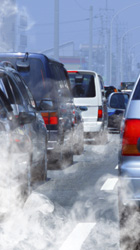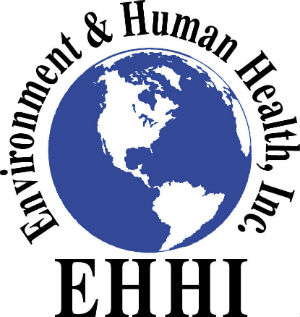Vehicle Exhaust: Press Release
Environment and Human Health, Inc. (EHHI) has released a groundbreaking report on the harmful effects of vehicle exhaust. EHHI is a non-profit organization composed of doctors, public health professionals and policy experts dedicated to protecting human health from environmental harms. The lead author of the research report, John Wargo, Ph.D., professor of Risk Analysis and Environmental Policy at Yale University’s School of Forestry and Environmental Studies, said, "Although we have all grown to accept the smell of engine exhaust as part of our everyday life, our nationis experiencing an epidemic of illnesses made worse by air pollution. Some of the illnesses exacerbated by air pollution are asthma, cancer, diabetes, heart disease and respiratory illnesses." Connecticut’s air quality is exceptionally poor. Polluted air flows into our state from the Midwest and from the densely populated areas in the Northeast corridor. However, we are also polluting our own air, as Connecticut residents now drive 31 billion miles in three million vehicles each year. Vehicle exhaust is the largest contributor to our state’s air pollution problems. "Many people assume that their individual vehicle exhaust contributions are insignificant, yet the collective effect is damaging to Connecticut’s air and to our residents’ health," said Susan Addiss, past commissioner of the Conn. Department of Public Health and present EHHI director of health education. The technological advances made in vehicle emission reductions are currently overwhelmed by the increases in the vehicle miles traveled. Connecticut residents spend, on average, 70 minutes a day in their cars, often breathing polluted air. The Conn. Department of Transportation projects that vehicle miles traveled in Connecticut will increase a little over 22 percent in the next 16 years. Scientific experts now believe that we face an epidemic of illnesses made worse by air pollution. For instance, the risk of having a heart attack is greater for those people exposed to pollution from heavy traffic and those living near air-polluted roadways. David Brown, Sc.D., EHHI director of public health toxicology and past chief of Environmental Epidemiology and Occupational Health at the Conn. Department of Public Health, noted that ozone levels in the New England region are some of the highest in the nation. Our entire state exceeds the federal 8-hour ozone standards. Exposures to ozone aggravate chronic lung disease, and the association between ambient ozone levels and increases in asthma-related emergency room visits is well-documented. Robert LaCamera, M.D., clinical professor of Pediatrics at the Yale School of Medicine and a reviewer of the study, commented, "The American Academy of Pediatrics has concluded that levels of ozone and particulate matter are high enough in many parts of the U.S. to threaten children’s health. With almost 10 percent of Connecticut’s children having asthma, the seriousness of our air pollution problem cannot be overstated." "Many of the chemicals in vehicle exhaust are carcinogenic, and yet we are exposed to them each and every day," said Nancy Alderman, president of EHHI. "We simply must reduce our exposures if we are to protect human health. One of the quickest and simplest ways to do this is to simply stop the unnecessary idling of cars and trucks. This means that when someone stops at the cleaners the car engine is turned off, and when trucks park to make deliveries, their engines are turned off." This report concludes with recommendations for all levels of government and for individuals. These recommendations will greatly help reduce harmful vehicle exhaust and also better protect the public’s health. 
